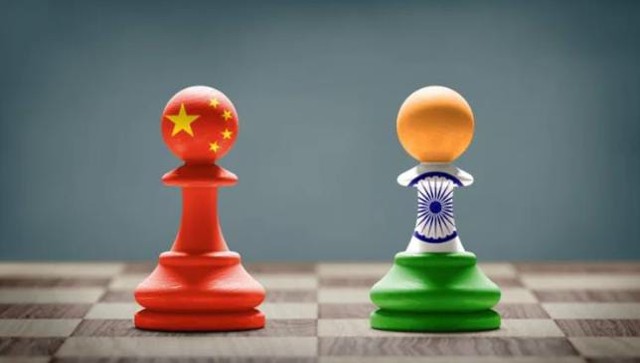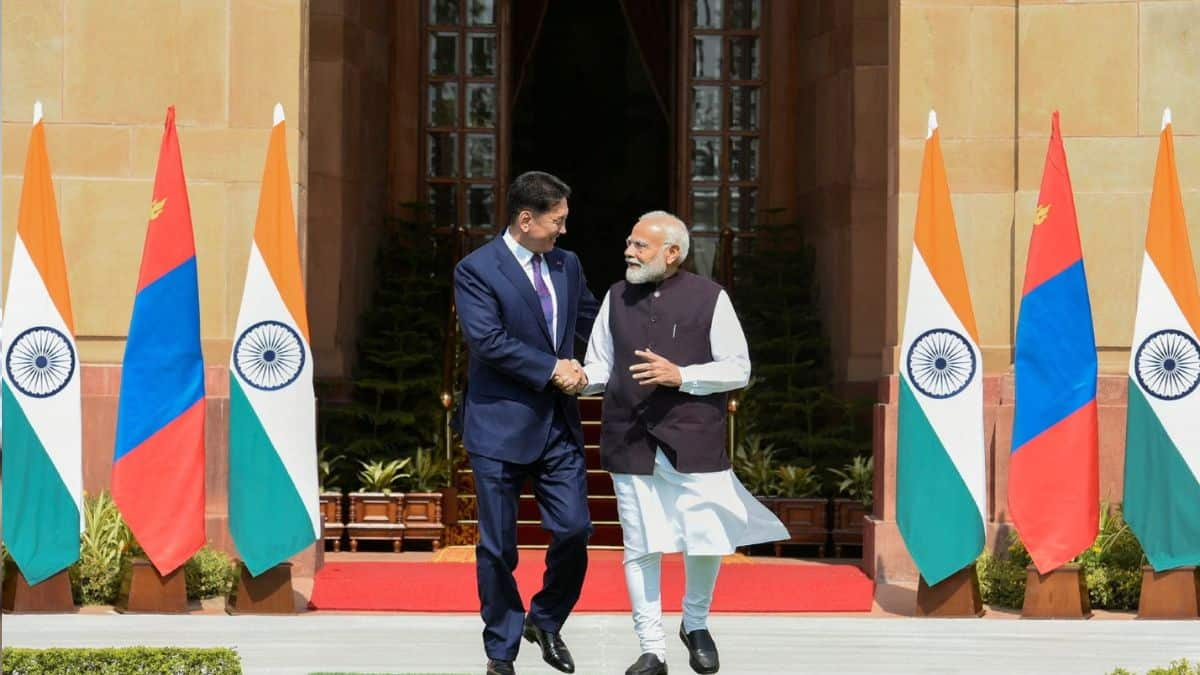It needs no great thinking to conclude that Bhutanese King Jigme Khesar Namgyel’s recent meeting with the Indian leadership, starting with Prime Minister Narendra Modi, was mainly to update them about the ongoing border talks with China, but not to seek India’s approval for whatever is agreeable to his country. Going beyond the traditional bonding at the bilateral level, the current phase of the Bhutan-China talks are of added interest and equal concern to India, in the aftermath of the ‘Doklam stand-off’. By rushing troops to the tri-junction when Bhutan was almost under siege in 2017, India ensured that an avaricious China had to take a step forward then, and return to the negotiations table with Thimpu, which is what the current negotiations are all about. Going by reports, Bhutan seems confident about a border agreement with China, independent of what it may mean for India per se. But Thimpu would be doubly cautious and would not want to keep India out of the loop, even if that is what Beijing may want. It is not without reason. Should the talks fail, or should Bhutan alienate India and Chinese dragon spits fire on the Himalayan kingdom one more time, then Thimpu would have nowhere else to go. That is the regional reality, where at the time of Doklam stand-off, no western friends of India even issued a statement that was supportive of India and sympathetic to Bhutan’s plight. Reluctantly, Japan came up with a brief statement three or four days down the line. The US and the rest of the West were seemingly weighing their geo-political, geo-economic preferences and options at the time. However, by the time China staged the gruesome cruelty of Galwan (2020), the West had become alive to the Indian street-opinion on their stoic silence during Doklam. Theirs were among the statements condemning China for the bludgeoning of 20 Indian soldiers, returning war-related violence to the Stone Age. Positive consensus, but… Leaving aside sea-centric territorial disputes with many of its neighbours, big and small, China has 14 nations with which it shares borders. It has had border disputes with every one of them. It has long since resolved those disputes with 12 nations. Only disputes with India and Bhutan need to be resolved. After Doklam, there is a perception that they are inter-linked. In January this year, experts from the two countries met in the Chinese town of Kunming and agreed to ‘push forward’ their boundary talks and to reach agreements. Thus far, the two sides have met more than 20 times and are said to be working for a ‘positive consensus’, whatever it means. ‘‘We are not experiencing major border problems with China, but some territories have not yet been demarcated,’’ Bhutanese Prime Minister Tshering said after the January talks, as if down-playing the extent of China’s intrusions. ‘‘After one or two more meetings, we will probably be able to draw a dividing line.’’ ‘‘It is not up to Bhutan alone to solve the problem,’’ the Bhutanese PM said in an interview. “There is no big or small country, there are three equal countries, each counting for a third,” he said in a loaded statement. ‘‘We are ready. As soon as the other two parties are ready too, we can discuss.’’ It is an indicator that Thimphu is willing to negotiate the Doklam tri-junction in Doklam with China and India. This is problematic for India, as it has nothing to negotiate or bargain, especially with China. If it materialises, China extending reach in Doklam has security concerns for India. The plateau lies close to the sensitive Siliguri Corridor, the narrow tract that separates India’s North-East from the rest of the country. The tri-junction, as reflected in international maps, lies at a point known as Batang La. China’s Chumbi Valley lies to the north of Batang La, Bhutan lies to the south and east, and the North-Eastern Indian State of Sikkim, in the west. The issue is about China wanting the tri-junction to be shifted 7 km south of Batang La to a peak called Mt Gipmochi, making the entire Doklam plateau a part of China. This is unacceptable to India, for obvious reasons. Even months before the Kunming talks, Bhutanese Foreign Minister Tandi Dorji told The Hindu in an interview in July 2022, that their decision with China for a ‘three-step road-map’ to resolve border disputes, will not compromise India’s interests. Of course, in his first interview since he signed the roadmap MoU with China in October 2021, and ahead of Bhutan’s decision to reopen its borders for tourists in September 2022, Minister Dorji said that neighbours must find a way to “resolve issues” between them. Bhutan and China were hopeful of resolving their disputes soon, and would later take up the tricky issue of the Doklam tri-junction area that involves India’s interests as well. Blowing hot and cold It is in this background that the Bhutanese King’s New Delhi visit assumes significance. Apart from PM Modi, External Affairs Minister (EAM) S Jaishankar and National Security Advisor (NSA) Ajit Kumar Doval also held discussions with the royal visitor. He had stopped over in New Delhi, en route to London to attend the British Queen’s funeral in September, and met PM Modi, in the midst of the continuing border talks with China. Briefing newsmen after the King’s talks with PM Modi this time, India’s Foreign Secretary Vinay Kwatra, said that the two countries were maintaining “close coordination” over all security matters, indicating that the talks possibly covered the latest situation along the India-Bhutan border as well as the progress in boundary talks between China and Bhutan, particularly above the Doklam tri-junction. As was to be expected, Secretary Kwatra did not spell out details, other than saying that the King and the PM discussed the “entire gamut” of bilateral cooperation and issues of national and regional interests, and that the two countries share an “exemplary” relationship of “trust, goodwill and mutual understanding”. He was in Thimphu in February, where he would have been updated about the Kunming talks the previous month. In context, it is not known what new developments might have occurred between then and now, for King to confer with the Indian leadership, and personally so. The question is if he stopped with updating the Indian leadership about the progress made in talks with China, or indicated that those talks have progressed to the level when New Delhi would have to join in and/or take a position, or went onto seek India’s inputs for Bhutan, too, to proceed with the ticklish foreign and security issues that are both the cause and effect of the bilateral talks. Or, was there more to his visit than meets the eye? In this background, observers of the India-China relations should be perplexed even more by Beijing blowing hot and cold on the matter. On the one hand, Chinese authorities reportedly approved of the Mumbai police’s request, sent through the Centre, to extradite Prasad Pujari, who is wanted in many extortion cases. It is anybody’s guess at this stage what China meant by asking India to send the extradition request in Mandarin, but initial indications are that Beijing will honour the Indian request. This, if it works out finally, should be a rarity, considering that China has repeatedly stone-walled even a global entity like the UN Security Council (UNSC) naming anti-India terrorists, propped up and shielded by Pakistan. Whatever the final outcome, China timed the Bhutan King’s India visit to ‘re-name’ 11 more places in Arunachal Pradesh, after similar exercises in 2017 and 2021. An official Chinese map, released with the latest announcement also shows much of Arunachal Pradesh marked as’ Zangnan’ in the south of the Tibetan Autonomous Region, that China calls Xizang. Alongside, Beijing also withdrew the professional visas granted to two Indian journalists, and told two others back home on holiday, not to return. MEA spokesperson Arindam Bagchchi has since pooh-poohed the Chinese ‘re-naming’ of places in Arunachal Pradesh, pointing out how some of them, including rivers, did not exist. Even without it, for India, such episodes, whether enacted one time or more, do not make any difference to ground realities or future negotiations, other than being a foot-noted irritant. Less harmful repeat Yet, it does remind all observers of the bilateral scene, nearer home and globally, how it is a less harmful repeat of the Doklam and the gruesome Galwan episodes, coming as they did after the Xi initiated informal summits with PM Modi, first, post-Doklam at Wuhan (2018) and later, pre-Galwan Summit in Mahabalipuram (2019). All of it leads to the question of what if China wants to be heard in any future border talks between India and Pakistan, as New Delhi seemingly wants to be informed and consulted on near- similar ongoing discussions between Thimpu and Beijing. Aksai Chin in China’s illegal possession, acquired through an illegitimate process involving unlawful Pakistan-occupied Kashmir (PoK) is Beijing’s fig leaf. However, if Bhutan and China sign a border agreement without involving Doklam tri-junction, then New Delhi can do nothing about it. If despite India’s known position and protestations, Bhutan signs on Doklam, too, with China, bilateral relations with Bhutan – where a democratically-elected government is the decision-maker – could become messy, also on the ground. With China, India’s ties cannot worsen as long as there is not another showdown of the Galwan kind or a more serious military engagement. If so, India would have lost one more neighbour, Bhutan. That should be the short-term worry, medium-term concern and long-term problem. The writer is a Chennai-based policy analyst and political commentator. Views expressed are personal. Read all the Latest News, Trending News, Cricket News, Bollywood News, India News and Entertainment News here. Follow us on Facebook, Twitter and Instagram.
Aksai Chin in China’s illegal possession, acquired through an illegitimate process involving unlawful Pakistan-occupied Kashmir is Beijing’s fig leaf
Advertisement
End of Article


)




